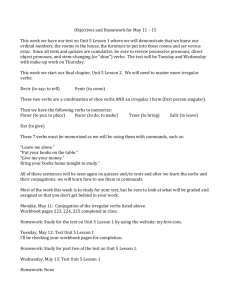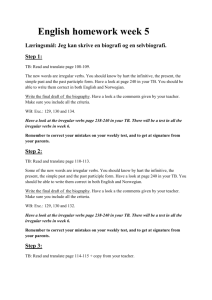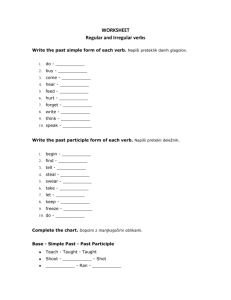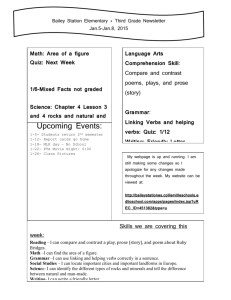File
advertisement
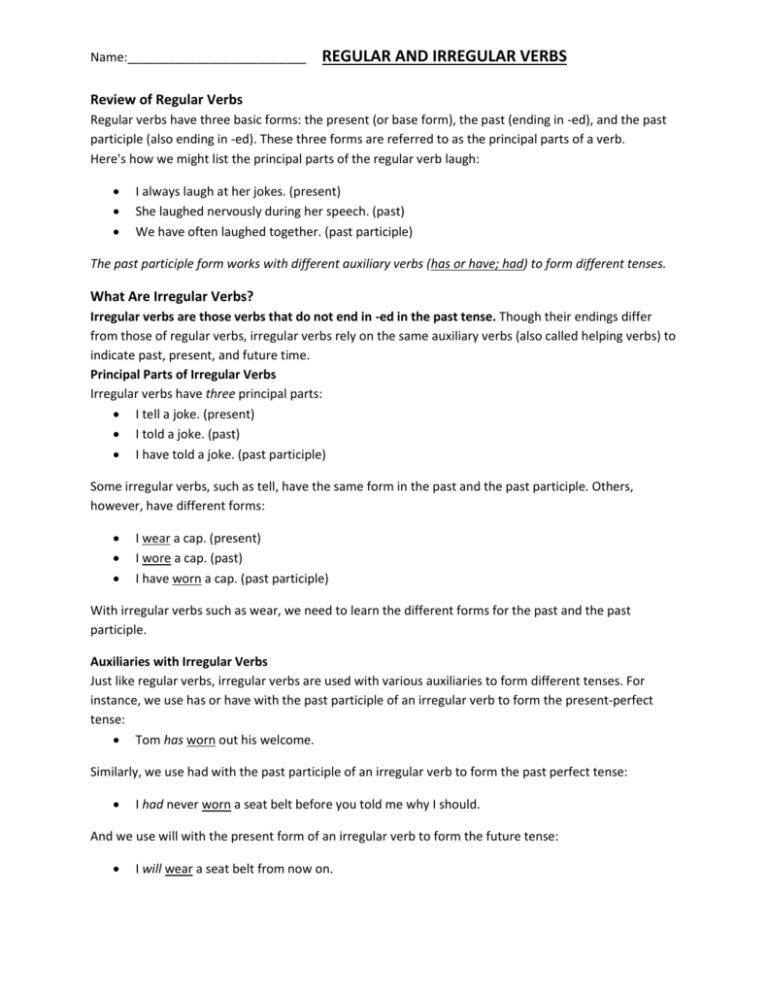
Name:__________________________ REGULAR AND IRREGULAR VERBS Review of Regular Verbs Regular verbs have three basic forms: the present (or base form), the past (ending in -ed), and the past participle (also ending in -ed). These three forms are referred to as the principal parts of a verb. Here's how we might list the principal parts of the regular verb laugh: I always laugh at her jokes. (present) She laughed nervously during her speech. (past) We have often laughed together. (past participle) The past participle form works with different auxiliary verbs (has or have; had) to form different tenses. What Are Irregular Verbs? Irregular verbs are those verbs that do not end in -ed in the past tense. Though their endings differ from those of regular verbs, irregular verbs rely on the same auxiliary verbs (also called helping verbs) to indicate past, present, and future time. Principal Parts of Irregular Verbs Irregular verbs have three principal parts: I tell a joke. (present) I told a joke. (past) I have told a joke. (past participle) Some irregular verbs, such as tell, have the same form in the past and the past participle. Others, however, have different forms: I wear a cap. (present) I wore a cap. (past) I have worn a cap. (past participle) With irregular verbs such as wear, we need to learn the different forms for the past and the past participle. Auxiliaries with Irregular Verbs Just like regular verbs, irregular verbs are used with various auxiliaries to form different tenses. For instance, we use has or have with the past participle of an irregular verb to form the present-perfect tense: Tom has worn out his welcome. Similarly, we use had with the past participle of an irregular verb to form the past perfect tense: I had never worn a seat belt before you told me why I should. And we use will with the present form of an irregular verb to form the future tense: I will wear a seat belt from now on.



